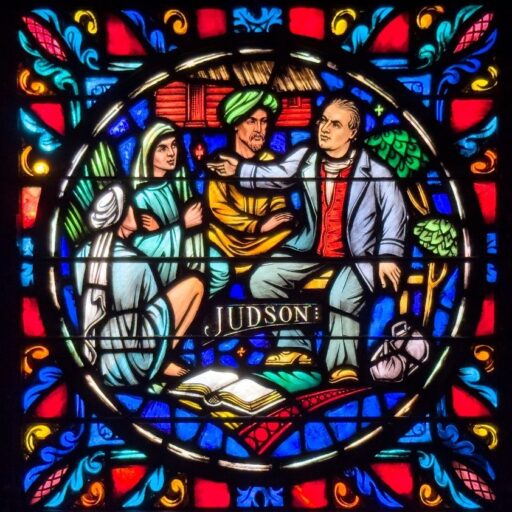1925-Present
Camp Judson
Keystone, South Dakota SD

Two of the founders of Baptist life in South Dakota were named Judson but neither can be tied to Adoniram or Ann Judson. “The first known religious organization in any of these settlements was a Baptist church established at Yankton, in the summer of 1864, by Rev. L. P. Judson. Its existence continued until the end of the 1865…”[1] “Rev. T. H. Judson became pastor at Elk Point October 23, 1872, and a year later settled at Vermillion.”[2] But South Dakota Baptists named their camp for Adoniram Judson rather than these two founding pastors.
In 1922 the Black Hills Association voted to begin a summer youth assembly and secured a lease from the US Forest Service in Bear Gulch east of the small village of Silver City. In the winter of 1925-26 basic facilities were constructed for a total sum of $200 and Camp Judson began in South Dakota. The original location for Camp Judson is now under the water impounded by Pactola Dan near Rapid City, South Dakota.

In the early 1950’s with the coming of the lake, plans were made for a new Camp Judson. the original plot was sold and new property was purchased near Keystone, South Dakota. On May 16, 1954, ground was broken for the new camp at the new site. The camp now consists[JC1] of 160 acres of mountain terrain on the border of the Black Hills National Forest with hiking trails that lead to Mount Rushmore, Mount Baldy and Horsethief Lake.
A uniqueness of Camp Judson is a financing scheme explained by David Gnirk, a rancher in South Dakota who was one of the founders of the Holy Cow Project.[3] It was decided in about 1992 that the camp should stand on its own financially, receiving no more subsidies from the Baptist Convention of South Dakota. With this new budgetary system adopted, the camp would lose about $35,000 over the next five years. A group of ranchers and denominational leaders met and conceived a plan whereby participants would designate a “Holy Cow” in their herd with the calves from that cow being given as income for Camp Judson. Thus, if a cow cost $2000 the first year’s calf would bring in about $1000. By the second year the second calf had paid for the cow and thus all future offspring would be revenue toward the operations and upkeep of Camp Judson. The Holy Cow Project raises $35,000 to $50,000 per year for Camp Judson.
Camp Judson has been able to buy a quarter section of land across the road from the camp where the Black Hills Central Railroad runs the 1880’s tourist train from Keystone to Hill City. This acreage provides pasture for cattle and signage to announce the Holy Cow program to visitors riding the train. The original goal of 100 cows producing 100 calves annually has been reached creating a live endowment like none other in Baptist life.
+++++++++++++++
[1] T. M. Shanafelt, The Baptist History of South Dakota (Sioux Falls, South Dakota: South Dakota Baptist Convention, 1899), p. 34.
[2] Ibid., p. 41.
[3] Phone conversation with David Gnirk, October 20, 2022.
